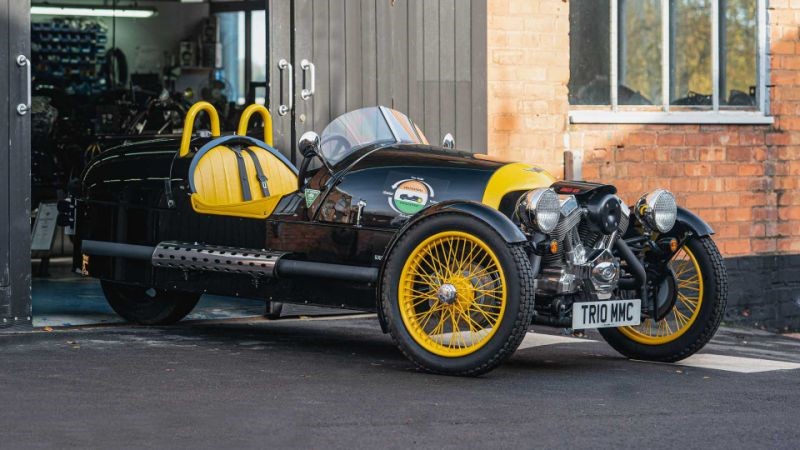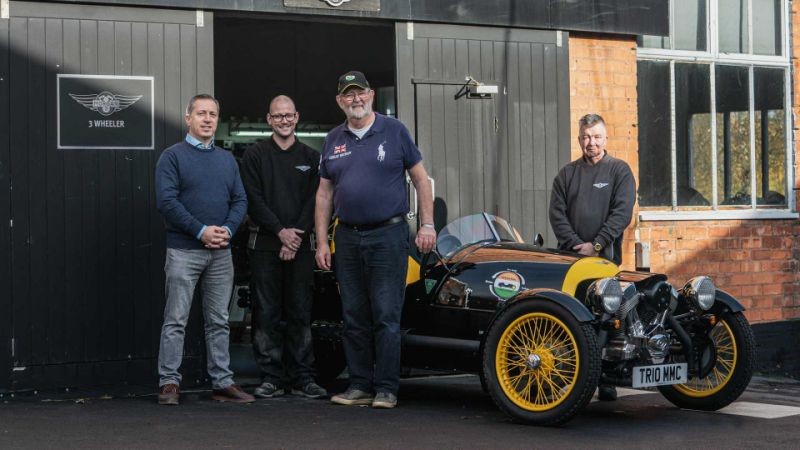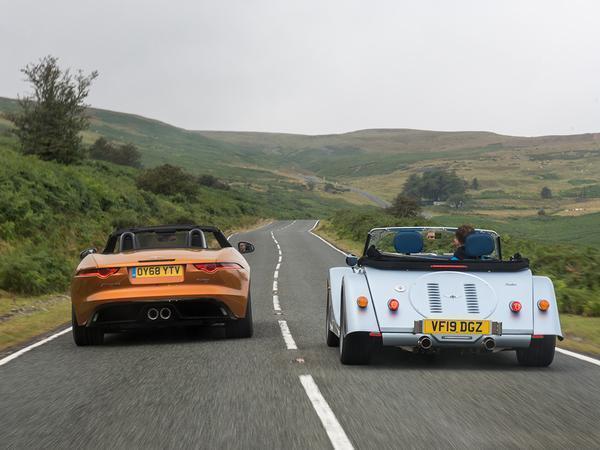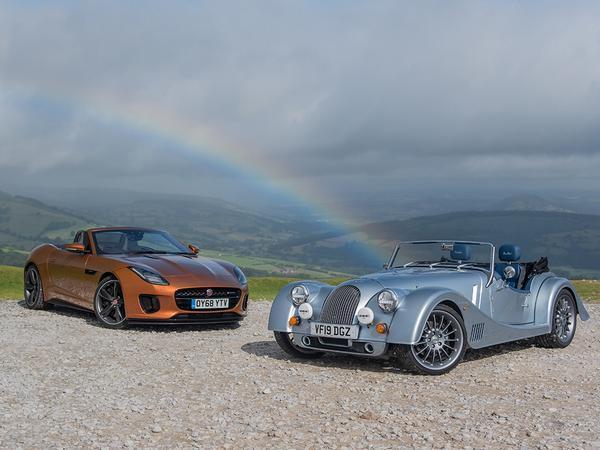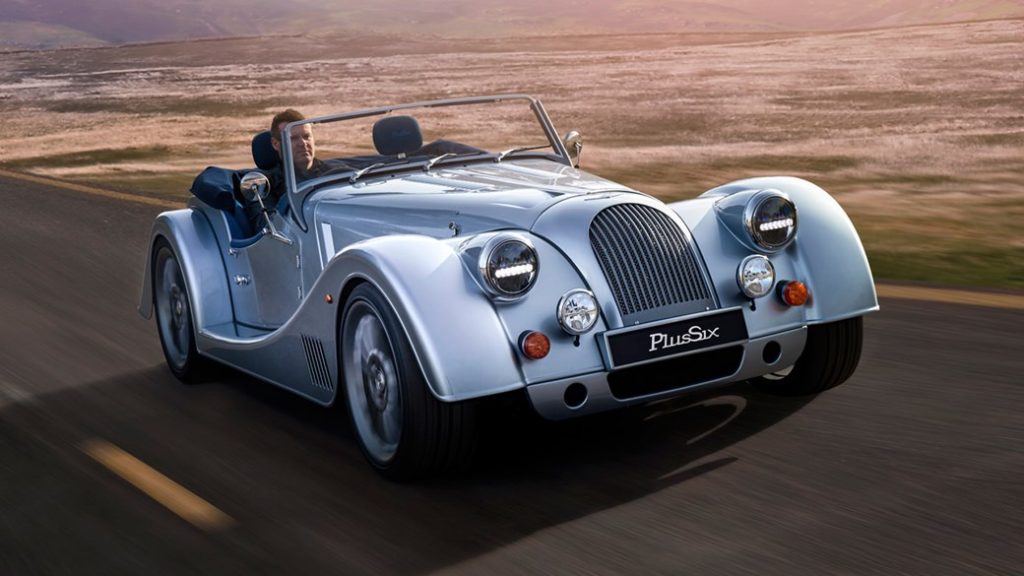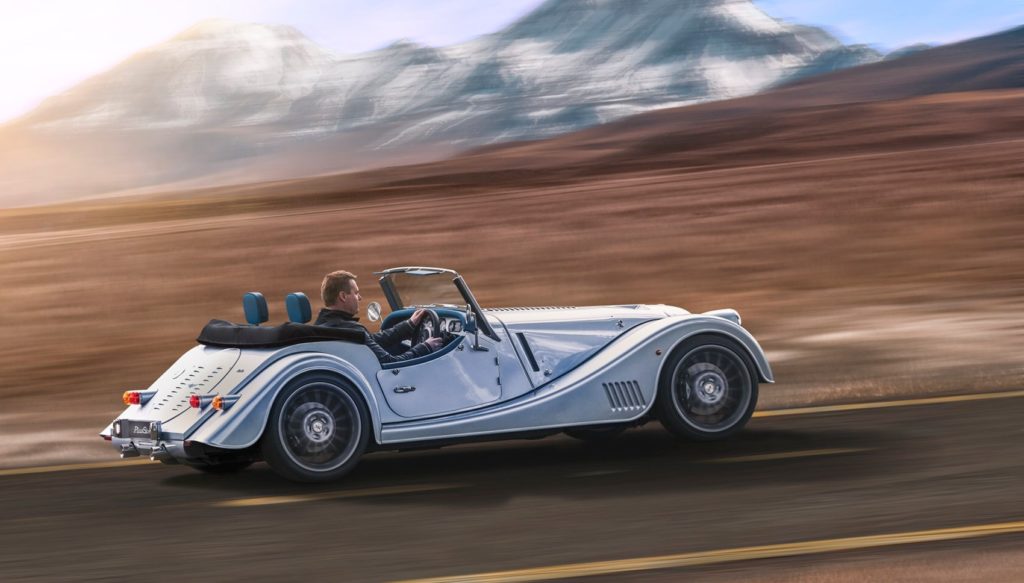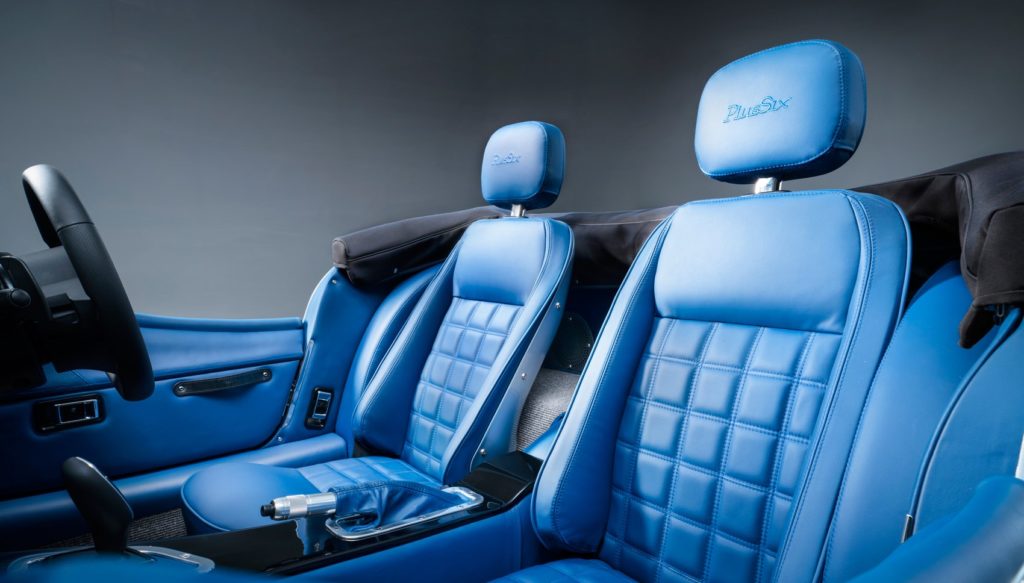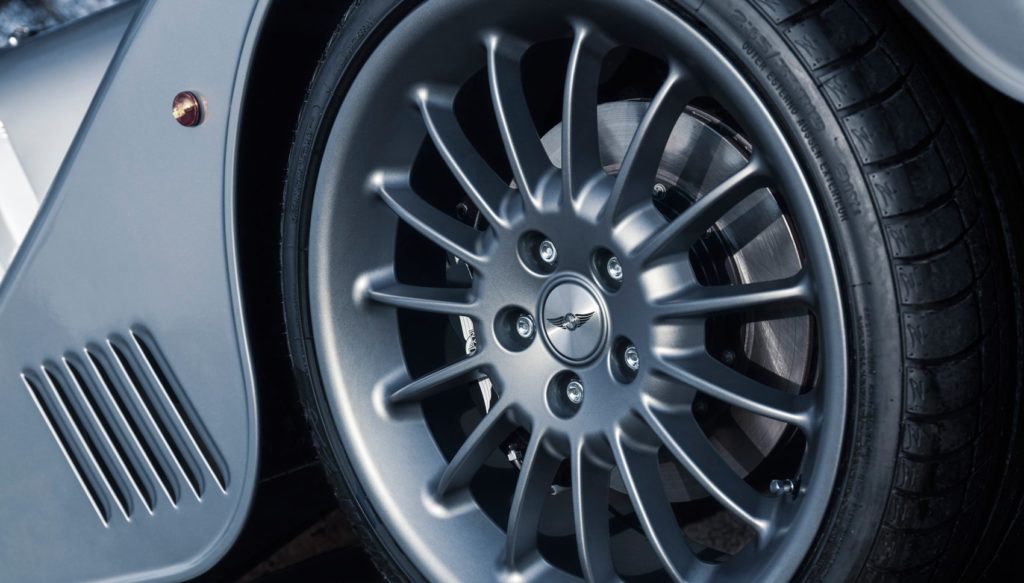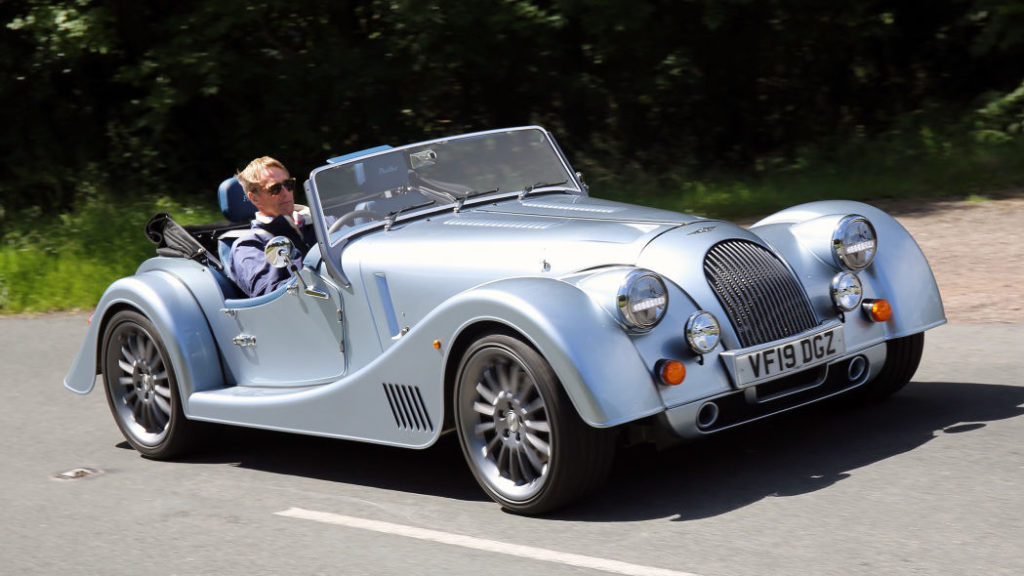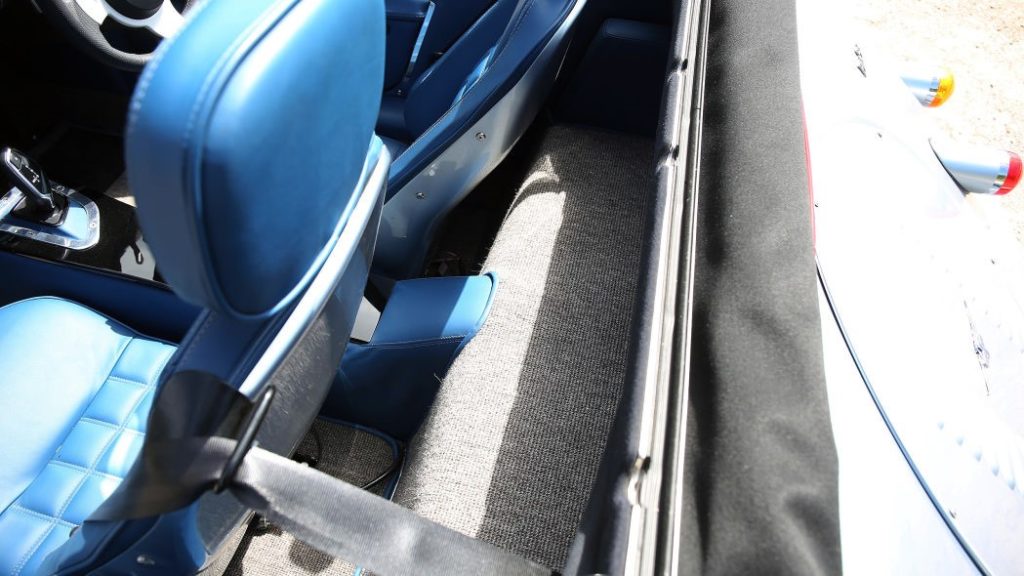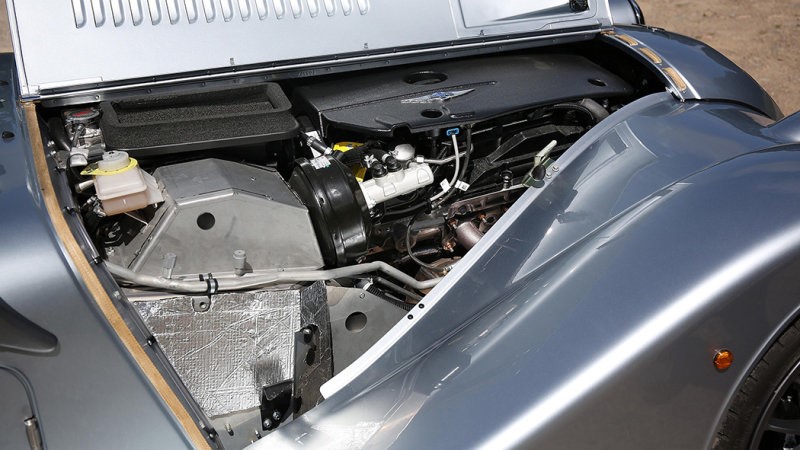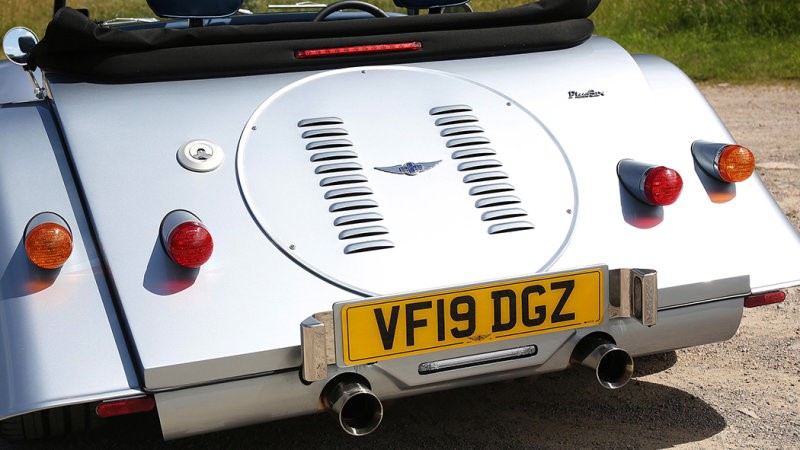The 2020 Morgan Plus 4 Feels Like it’s From an Alternate Reality (https://www.msn.com/)
Much has been made of the 3.7 Roadsters coming into the US but little of the other options, like the Plus 4. Here is a good review, thanks to John Wade in Huntsville. Enjoy.

The lack of airbags didn’t worry me. Nor did the conspicuous absence of rollover protection, ABS, traction control, stability control, and power steering. That stuff (or lack thereof) is cake; be mindful of your surroundings and your right foot, and you’ll more than likely be alright. Rather, it was the five (six? seven?) step process to erect or disassemble the cloth top of my loaner 2020 Morgan Plus 4 that caused me to sweat the most.
As if on cue, the skies above Morgan West—the home of Morgan Motors in Los Angeles and one of nine authorized dealers scattered around the U.S.—was ominously gray and heavy with the rain my weather apps declared was inevitable. Clearly, I’d need to memorize the innumerable snaps, clips, latches, and handles involved, along with the correct way to collapse the top, so I could avoid a soaking of both myself and the car’s gorgeous saddle brown interior. Beyond ruining interior electronics and leather, I ran the risk of shearing portions of the canvas lid if I didn’t fold its exposed metal joints in the correct manner.
Despite my fumbling, my instructor and Morgan West master mechanic Stefan Mincu wasn’t concerned. “You can be rough with these cars,” he explained as he leaned into the cockpit. “They look and feel delicate, but they’re quite robust. Plus, if you break anything, don’t worry—we’ll fix it.” That’s not something you expect to hear from a boutique automaker whose nationwide inventory would likely fail to fill half the lot at a Ferrari dealership.

However, if the silver blue Plus 4 roadster I got my hands on for a few days is anything to go by, that could all change in the next few years. Like many other ultra-low-production manufacturers—Superformance is the first to sprint to mind—Morgan awaits whatever comes from the Low Volume Motor Vehicle Manufacturers Act of 2015. That act was a dictate to NHTSA to develop specialized and more lenient regulations for small-scale automakers without requiring them to adhere to the same safety and emissions rulebook held by multinational behemoths like Toyota and Ford.
For now, all new Morgans inside Morgan West’s showroom sneak into the country via the same loophole many other kit-car and low-volume manufacturers take advantage of: The cars arrive in the U.S. sans engine and sometimes transmission, and are only introduced to their new hearts on U.S. soil. My tester Plus 4 received its transplant at Morgan West, presumably where the mass majority of L.A.-based Morgan customers opt to have their cars prepped.
Don’t call the Morgan a kit car, even if it toes the same regulatory gray lines as such machines do. All Morgans are handcrafted originally in Malvern, Worcestershire, U.K., via a blend of modern and old techniques that, yes, do still include extensive use of wood. Specifically, the frame that supports the exterior body is built from ash wood and overlaid with aluminum paneling for rigidity and longevity. Wait, you say, I thought the chassis was made of wood? No, it’s steel. Same goes for those allegedly wooden body panels that are actually aluminum.
Pep-talk over, I cut my way through the heart of Santa Monica in a vehicle I was woefully unfamiliar with. After taking stock of the interior, every preconceived notion I held about Morgan shattered. The Plus 4’s fit, finish, and quality is beyond even the best products emerging from top luxury brands. That doesn’t mean the Morgan is more luxurious or well-furnished, but the car feels hand-built and unique in a way semi-mass-produced cars do not, regardless of price. Leather appointments are tight and of the highest quality, and the metal trim and touchpoints are flawless and substantial. The floorboards have a nice strip of polished metal etched with the Morgan crest running the length of the footwell; it’s all done with a level of extreme care and artisanship you’ll be hard-pressed to find as part of anything not wearing Aston Martin wings on its snout.

All this finery and care put into presentation and build quality does an excellent job of enhancing the off-the-shelf switchgear. Buttons, knobs, warning lights, and signal stalks are surely lifted from something else, but it all seems very mise en place. Even the gauges add to the experience: Charmingly, the tach and speedo are both mounted on the center of the flat dash, just above the shifter. This attention to detail extends to the exterior with impeccable paintwork and tight panel gaps.
Just about the only thing not hand-built (or at least hand-finished) is the 2.0-liter Ford Duratec GDI four-cylinder engine under the split front cowl. This is essentially the same naturally aspirated 2.0-liter found in the recently discontinued U.S.-market Ford Focus, and it puts out 154 horesepower and 148 lb-ft of torque, routed to the rear wheels through a five-speed manual transmission purloined from an early-generation Mazda MX-5 Miata.
All of these separate ingredients—craftsmanship, 1950s styling, quality control, modern engine—add up to a rather bizarre package. As most newish Morgans do, it looks like it rolled directly out of the post-war sports car boom, but when you slide inside, you find seat belts, heated seats, a digital odometer, and Bluetooth connectivity. The engine is direct injected, electronically controlled, and eco-friendly, but as mentioned there are no driving aids, no ABS, no power steering. The car is appointed like a fine grand tourer, but the ride is excruciatingly raw, there’s no trunk whatsoever, there’s no glovebox door, and the only way to keep the weather out is to drive with the removable side-curtains installed.

Taken as a whole, the Morgan Plus 4 is a unique automotive experience. In 2020, it’s the anti-car, a flash from an alternate reality where we retained what made old cars so charming and visceral, and gussied them up with better tech and build quality. Forget restomod muscle cars; those are designed and built to drive more like a modern car than an old one. The Plus 4 is perfect parity between the Old World and New Age, warts and all.
I departed Santa Monica and took to Malibu’s nearby hills for a shakedown run. The 154 hp only has just more a ton to haul around, returning straight-line performance that’s similar to a new Miata’s, and is more than enough poke. It might be new-fangled, but Morgan fussed with the Ford 2.0-liter’s character to handily turn it from staid commuter to an effervescent and buzzy little engine befitting of the Plus 4’s antiquated persona. A Miata transmission of any age remains one of the best in the business and is a joy to snap-off quick shifts with in pursuit of the 2.0-liter’s peaky powerband. A completely redesigned exhaust system from what the engine usually mates to is partially behind the personality shift, but even without the rasp, it’s rev-happy and alive in a way you wouldn’t expect from an engine designed for basic transportation.
Then, I found a corner. I drove gingerly for the first half-hour, cognizant about the lack of any built-in safety nets. Manual steering and stiff brakes force you to think far ahead, though the steering is one of the Plus 4’s best attributes once you fall into rhythm. At speed, it’s well-weighted and exceptionally tactile, sending small (or not-so-small) jolts through the leather-wrapped polished metal steering wheel for each pebble or lane divider you cross.

Handling is more difficult to get a read on than most classic small sports roadsters I’ve driven in the past, primarily due to an antiquated suspension layout. The hardware includes thoroughly modern bushings, springs, and shocks, but the Plus 4 retains the same sliding-pillar front suspension and solid rear axle design as it did nearly 70 years ago. The whole car creaks and flexes when pushed, and feels completely disjointed over rough pavement, but once you start to learn what to expect from the chassis, your confidence builds on a smooth canyon road and you begin to push a little harder, inch by inch.
Eventually, all the ragged stuff just melts away. The squeaks and rattles become endearing, the punishing ride forgivable, and suddenly, the idea of an independent rear suspension and adaptive ride seem like futuristic follies. Who cares about entry speed when you’re having this much fun? You’ll get to where your going eventually.
Therein lies the Plus 4’s secret: manage your expectations, and it’s unfiltered, unpasteurized automotive fun of the highest caliber. Drive one around for a few hours, and while you might not rush down to Morgan West to place a deposit, you’ll get it. You’ll understand why a small group of enthusiasts plunk down brand-new Porsche Cayman S money for a car that has no trunk, a complicated cloth roof, no fixed windows, and zero safety features beyond a three-point seatbelt.
Here’s hoping the Plus 4 sticks around for another seven decades.




